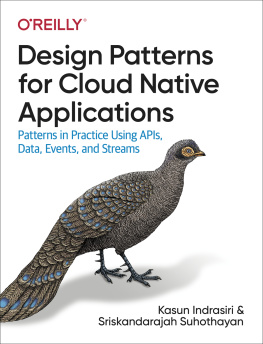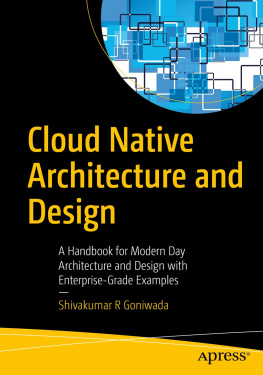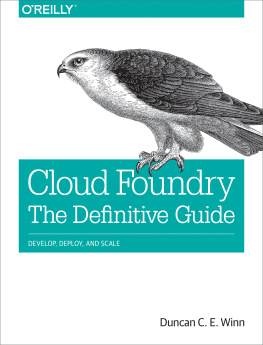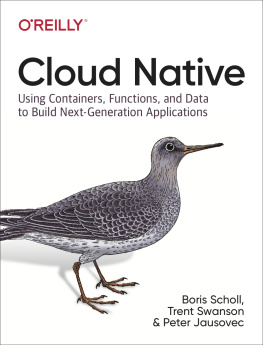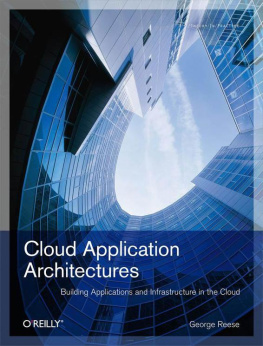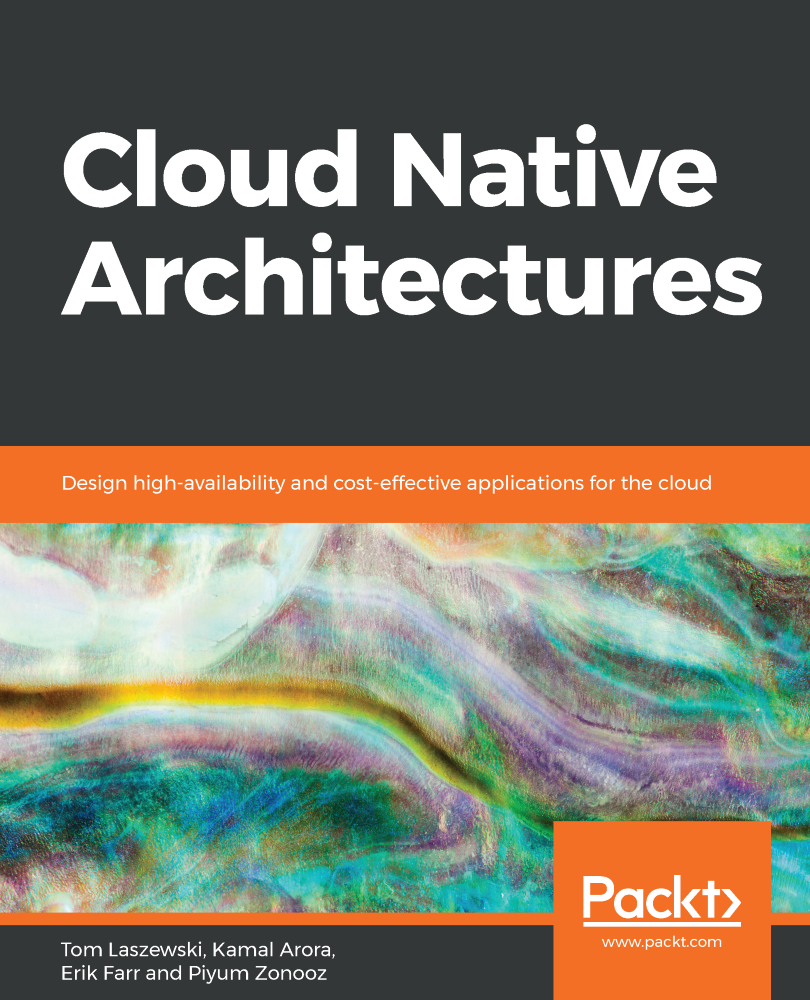
Cloud Native Architectures
Design high-availability and cost-effective applications
for the cloud
Tom Laszewski
Kamal Arora
Erik Farr
Piyum Zonooz
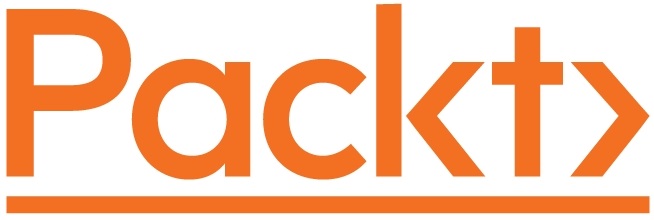
BIRMINGHAM - MUMBAI
Cloud Native Architectures
Copyright 2018 Packt Publishing
All rights reserved. No part of this book may be reproduced, stored in a retrieval system, or transmitted in any form or by any means, without the prior written permission of the publisher, except in the case of brief quotations embedded in critical articles or reviews.
Every effort has been made in the preparation of this book to ensure the accuracy of the information presented. However, the information contained in this book is sold without warranty, either express or implied. Neither the authors, nor Packt Publishing or its dealers and distributors, will be held liable for any damages caused or alleged to have been caused directly or indirectly by this book.
Packt Publishing has endeavored to provide trademark information about all of the companies and products mentioned in this book by the appropriate use of capitals. However, Packt Publishing cannot guarantee the accuracy of this information.
Commissioning Editor: Aaron Lazar
Acquisition Editor: Chaitanya Nair
Content Development Editor: Rohit Singh
Technical Editor: Ketan Kamble
Copy Editor: Safis Editing
Project Coordinator: Vaidehi Sawant
Proofreader: Safis Editing
Indexer: Aishwarya Gangawane
Graphics: Jason Monteiro
Production Coordinator: Shantanu Zagade
First published: August 2018
Production reference: 2031018
Published by Packt Publishing Ltd.
Livery Place
35 Livery Street
Birmingham
B3 2PB, UK.
ISBN 978-1-78728-054-0
www.packtpub.com
mapt.io
Mapt is an online digital library that gives you full access to over 5,000 books and videos, as well as industry leading tools to help you plan your personal development and advance your career. For more information, please visit our website.
Why subscribe?
Spend less time learning and more time coding with practical eBooks and Videos from over 4,000 industry professionals
Improve your learning with Skill Plans built especially for you
Get a free eBook or video every month
Mapt is fully searchable
Copy and paste, print, and bookmark content
PacktPub.com
Did you know that Packt offers eBook versions of every book published, with PDF and ePub files available? You can upgrade to the eBook version at www.PacktPub.com and as a print book customer, you are entitled to a discount on the eBook copy. Get in touch with us at service@packtpub.com for more details.
At www.PacktPub.com , you can also read a collection of free technical articles, sign up for a range of free newsletters, and receive exclusive discounts and offers on Packt books and eBooks.
Foreword
The purpose of this book is to find the intersection between practicality and cloud native. It's an exploration of what's possible, and includes the whys and the hows. This book is the jumping-off point for the next generation of cloud computing, nothing less.
The goal is to turbocharge the power of cloud computing, and have applications be all that they can be on the platform. Everyone related to cloud computing can benefit from this book, including developers, end users, and thus the business as a whole. Remember, it should always be the objective of IT to meet and exceed the needs of the business. This book will help IT make effective plans to meet those goals.
The pros of going to cloud-native features include the following:
- Performance: You typically access native features of the public cloud services to provide better performance than is possible with non-native features. For example, you can deal with an I/O system that works with auto-scaling and load-balancing features.
- Efficiency: Cloud-native applications' use of cloud-native features and APIs should provide more efficient use of underlying resources. That translates to better performance and/or lower operating costs.
- Cost: Applications that are more efficient typically cost less to run. Cloud providers send you a monthly bill based upon the amount of resources consumed, so if you can do more with less, you save on dollars spent.
- Scalability: Because you write the application to the native cloud interfaces, you also have direct access to the auto-scaling and load-balancing features of the cloud platform.
To take proper advantage of a cloud platform, including IaaS platforms such as AWS, you have to design the applications so that they're decoupled from any specific physical resource. For example, if you access I/O directly from a platform such as Linux, you need to access the cloud's abstraction layer, or their native APIs.
Clouds can provide an abstraction or virtualization layer between the application and the underlying physical (or virtual) resources, whether they're designed for cloud or not. But that's not good enough. If you're going truly cloud native, you need to directly control the native resources.
When this architecture is considered in the design, development, and deployment of an application, the utilization of the underlying cloud resources can be as much as 70 percent more efficient. This cloud computing efficiency equals money. You're paying for the resources you use, so applications that work more efficiently with those resources run faster and generate smaller cloud services bills at the end of the month.
Cloud native is not only about changing the code to follow the features of a specific cloud; it's also about changing your approach to architecture design. These cloud-aligned architectures can auto-scale, and are also distributed, stateless, and loosely coupled, just to name a few features. If you want to make applications truly cloud native, the architecture must be rethought before you begin refactoring the code.
Does this new approach to application architecture suck resources and money, as well as add a great deal of risk? Yes. However, the risk-reward typically leans to the reward side, if the life of an application is 10 to 15 years (which it is for most enterprises). The effort of both re-architecture and refactoring for an application with long-term use will pay for itself many times over.
When migrating applications to the cloud, the evidence is compelling for the cloud-native applications path. The benefits outweigh the costs for most applications that are picked to move to the cloud, but given that refactoring costs 30 times that of simple re-hosting, enterprises are reluctant to dive in with both feet.
So, this will be another learning process similar to what users saw when we made applications platform-native, Unix/Linux-native APIs. We had to fail before we succeeded. Here I suspect we'll follow the same patterns. Meaning, in a few years, cloud native will become the best practice. However, that won't happen until we fall on our faces a few more times. Some things never change.
Next page

